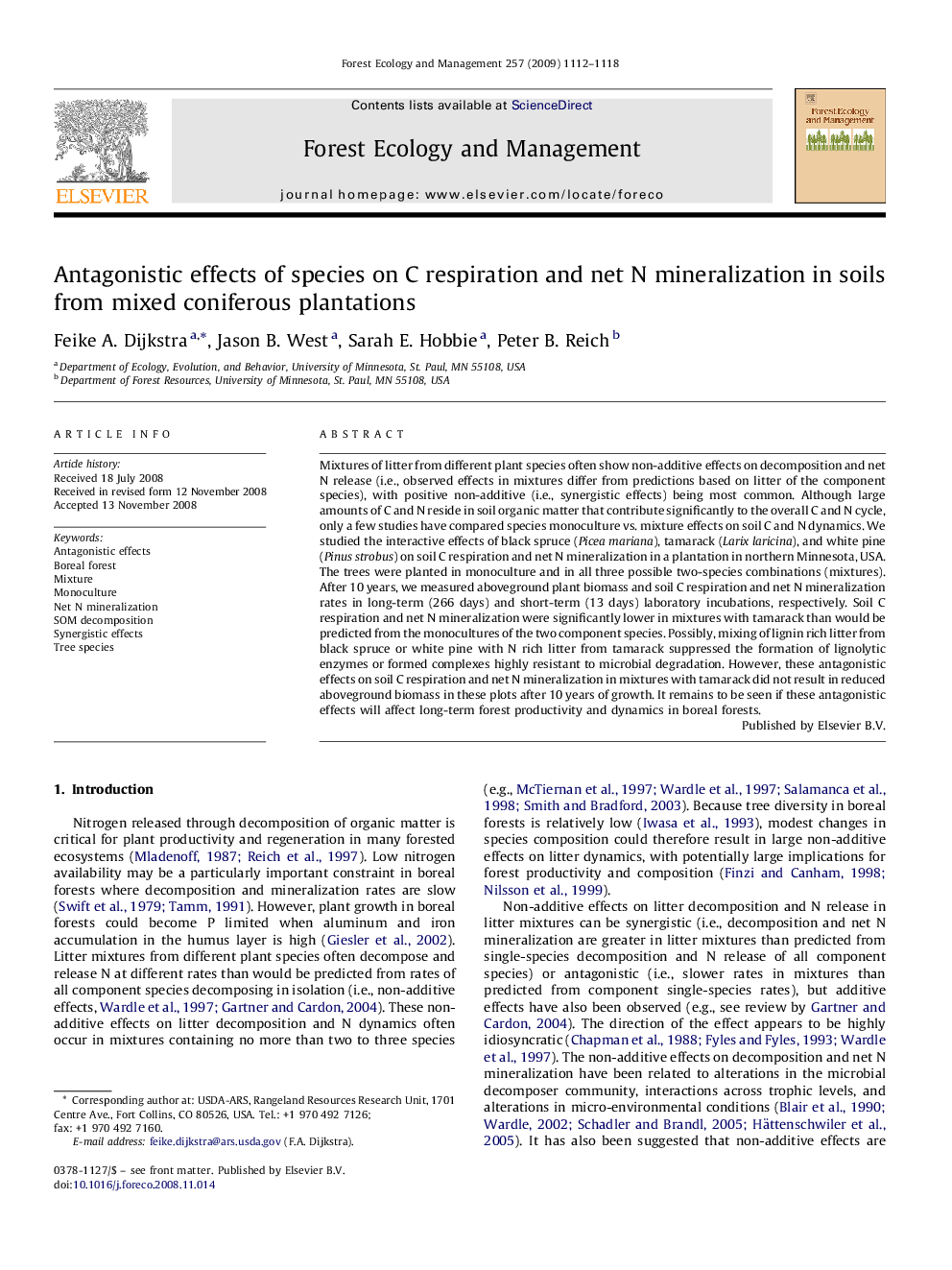| Article ID | Journal | Published Year | Pages | File Type |
|---|---|---|---|---|
| 89120 | Forest Ecology and Management | 2009 | 7 Pages |
Mixtures of litter from different plant species often show non-additive effects on decomposition and net N release (i.e., observed effects in mixtures differ from predictions based on litter of the component species), with positive non-additive (i.e., synergistic effects) being most common. Although large amounts of C and N reside in soil organic matter that contribute significantly to the overall C and N cycle, only a few studies have compared species monoculture vs. mixture effects on soil C and N dynamics. We studied the interactive effects of black spruce (Picea mariana), tamarack (Larix laricina), and white pine (Pinus strobus) on soil C respiration and net N mineralization in a plantation in northern Minnesota, USA. The trees were planted in monoculture and in all three possible two-species combinations (mixtures). After 10 years, we measured aboveground plant biomass and soil C respiration and net N mineralization rates in long-term (266 days) and short-term (13 days) laboratory incubations, respectively. Soil C respiration and net N mineralization were significantly lower in mixtures with tamarack than would be predicted from the monocultures of the two component species. Possibly, mixing of lignin rich litter from black spruce or white pine with N rich litter from tamarack suppressed the formation of lignolytic enzymes or formed complexes highly resistant to microbial degradation. However, these antagonistic effects on soil C respiration and net N mineralization in mixtures with tamarack did not result in reduced aboveground biomass in these plots after 10 years of growth. It remains to be seen if these antagonistic effects will affect long-term forest productivity and dynamics in boreal forests.
